
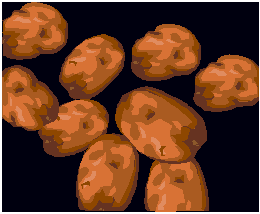

|
The Irish Potato Famine |
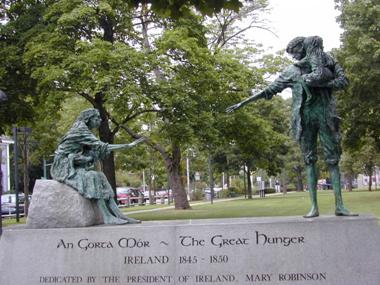
|
The Irish Potato Famine is an event in history that underscores the importance of not only understanding biology, but what can happen when countries are inhuman to each other. The Irish Potato Famine is, just as its name suggests, a famine caused by the sudden decimation of the potato crop in |
|
Ireland which began in 1845 and lasted until about 1860. To gain a better perspective, however, it’s necessary to begin by considering the history of the potato in Ireland. |
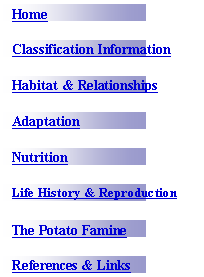

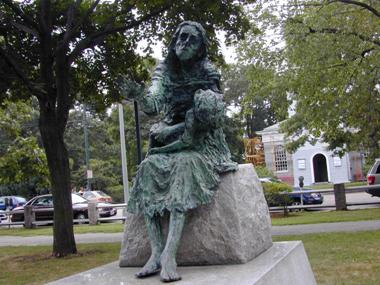
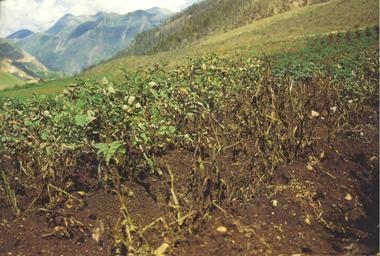
|
The potato (Solanum tuberosum L.) has its origins in South America. Incans grew, ate, and even buried them with potatoes with their dead. However, they did not exist in Ireland until 1589 when British explorer Sir Walter Raleigh brought them back from South America and planted them at his estate in Ireland at Myrtle Grove, Youghal. Legend has it that Sir Raleigh made the potato a gift to Queen Elizabeth I, and she in turn hosted a royal banquet which featured the potato in every course of the meal. Unfortunately, the cooks didn’t have experience with the potatoes and threw out the tubers (what we eat and usually picture a potato as being) while they kept and cooked the leaves and stems (Stradley 2004). As with other members of the family Solanaceae such as nightshade, the leaves are stems are poisonous (Volk 2001). The royal banquet attendees became deathly ill, and as a result, the potato was banned from further use (Stradley 2004).
|
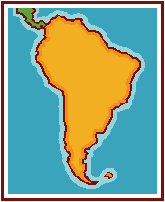


|
Beginning as early as the 5th century, the Irish and British had many conflicts, which eventually led to the Irish being subjected to the whims of the British (Handelsman 2000). Most land (especially the rich in nutrients and good land) in Ireland was owned by English absentee landlords. These landlords made long-term leases to other Englishmen who in turn rented them at high rates to the Irish whose family may have lived there for hundreds of years or more (Volk 2001). The Irish often used the good lands to produce crops to pay off the Englishmen leaving them with a small, poor piece of land to work with to produce food for themselves (Volk 2001). |
|
However, sometime in the early 1800’s, Europeans discovered that the tubers of potatoes were edible. Soon many people in Europe were using the potato as food, including the Irish. In fact, during this time period the Irish were highly dependent on their potato crop and are reported to have eaten seven to fourteen pounds of potatoes each day! You might be asking, why would anyone eat that many potatoes in a day? Well, it wasn’t entirely by choice. |
|
However, the Irish did not give up fighting (no pun intended). Because the potato grew easily, even in poor conditions, it soon became the food staple of Irish life. It seemed that the Irish would be able to survive for a time despite the tyrannous burdens placed on them by the British. However, because the potato only grew by vegetative propagation (asexual reproduction) because of Ireland’s short growing season, the potato plants existed basically as identical copies of itself. Catastrophe loomed on the horizon for the Irish peasants (Handelsman 2000). |
|
Phytophthora infestans thrives in wet and cool conditions. In 1845, the summer weather in Ireland suddenly changed to a very wet and cool climate—the very conditions needed for Phytophthora infestans to infect the potato crops. What added gasoline to the fire so to speak was the lack of genetic variability in the potato crop—there was no natural defense against the pathogen in any of the plants because they were all basically clones of each other. Within a week, Phytophthora infestans decimated the once healthy potato crop to a countryside of rotting plants. Thus began the potato famine which lasted for approximately fifteen years (Handelsman 2000). |
|
The Irish during this time suffered devastating loses of family, friends, and fellow countrymen. Of the 8 million Irish in 1845, one million died, while 1.5 million emigrated to the United States. This caused a over 30% decrease in population just in 15 years! (Volk 2001). |

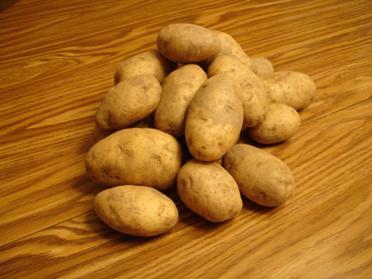
|
This monument entitled, “An Gorta Mor ~ The Great hunger,” was dedicated by the President of Ireland and stands in Cambridge, Massachusetts. The monument depicts the suffering, famished people of Ireland during this tragic time in history. It stands to warn us of the consequences of inhumane acts and the dangers of having genetically identical organisms. |
|
Photo Credits 1. Courtesy Jorge Luis Alonso G.Reproduced with permission from Jorge Luis Alonso G. 2007. Red Electronica de la Papa, REDEPAPA. 2. Courtesy H. D. Thurston. Reproduced with permission from Schumann, G. L. and C. J. D’Arcy. 2000. Late blight of potato and tomato. The Plant Health Instructor. DOI: 10.1094/PHI-I-2000-0724-01. 3. Courtesy T.J. Volk. Reproduced with permission from T.J. Volk. 4. Courtesy T.J. Volk. Reproduced with permission from T.J. Volk. |
|
Infected Potato Field (1). |
|
Microsoft Clipart |
|
Microsoft Clipart |
|
Microsoft Clipart |
|
Microsoft Clipart |
|
Half of a ten pound bag of potatoes I had in the fridge. |
|
Phytophthora infestans sporulation (white areas) on potato tuber (2). |
|
Potato Famine Memorial Cambridge, MA (3). |
|
Potato Famine Memorial Cambridge, MA (4). |